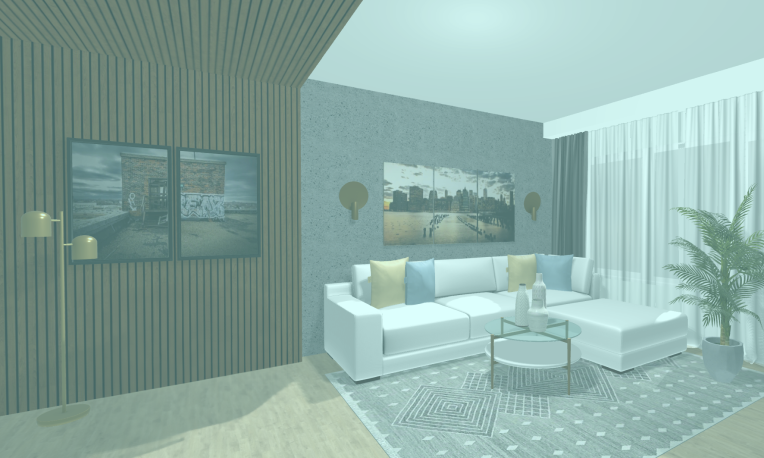Dear e-designer (or aspiring e-designer!), I want to pose this question to you: what are clients hiring you to do? At the end of the day, you’re being hired to provide a set of “deliverables.” That’s it. Of course, there’s a lot that goes into actually putting those deliverables together, but that set of items is the product you are selling. Defining your deliverables, communicating them at the outset, and flawlessly carrying them out for your clients is an absolute necessity if you want to be a successful e-designer.
Since e-design takes place entirely online, remember that the ultimate goal for these items should be to empower your clients to be able to bring a design to life based on your guidance. In order for them to be able to do that on their own, you need to give them all the information and tools they’ll need.
So, what deliverables should be included in an e-design project?
Since starting my business, Mix & Match Design Company, in 2015, I’ve spent a lot of time developing and refining my e-design services, and I’ve honed in on four main deliverables:
- A design board (a mockup of the design you’re proposing)
- A floor plan showing the furniture arrangement
- Any additional instructions for the client on how to set up the space
- A shopping list
You may want to offer more – perhaps something like a half-hour FaceTime consult or a 3D rendering of the space – it’s up to you! Just be sure to price your services in a way that reflects the amount of time you’ll be spending on them.
Let’s dive into a little more detail about each of those four main deliverables…
The Design Board. These can be as simple or as complex as you would like, but they should give your client a sense for how a room would look with the pieces you are recommending for their space. It’s an incredibly powerful visualization tool. Be sure that each piece is visible on the board while maintaining its approximate scale. Design boards are the main way that clients will make the final decision about their new furniture and decor, so accuracy is important, but to truly show scale, you’ll need to create a floor plan as well.
Floor Plans. Floor plans give the client a fuller picture of the overall design and how things will look set up. These birds eye views also help you, as the designer, make sure each piece fits well in the space overall.
Client Instructions. Once you have the design board and floor plan set, you’ll be able to put together any specific instructions the client will need to actually implement the design. This may include suggestions on how to hang curtains, art placement, and so on. The more specific you can be with those instructions, the fewer questions you’ll receive later down the road!
The Shopping List. Finally, the last deliverable is the actual shopping list. This is where you lay out exactly what the client needs to purchase to bring that look from the design board to life. There are different ways to format and deliver it to your client, but the important thing is to make sure to include all the pertinent information about the items so they can buy quickly and easily. I recommend including a photo of the item, a direct link to the website to purchase, details on specifics like fabric choice or size, and any other details you deem necessary. It should also have a professional and polished look – after all, this is something that represents your business and brand! You can create beautiful shopping lists in a basic software like Excel, or you can use an online platform like DesignFiles, which is what I currently use for the vast majority of my clients. Find what works best for your business.
Once you’ve determined what those deliverables will be, what they’ll look like, and how you’ll carry them out, it’s time to list them out on your website. Share specifics about them and include examples of what they would look like – this combination of information and visuals will help potential clients assess whether what you’re offering work well for their needs or not. By being clear and specific on your site about what your e-design services offers, you’ll be able to attract more of your ideal clients and spend less time fielding inquiries from folks who aren’t a good fit. Make your website work for you!
Creating these well-defined deliverables is crucial part of running a successful e-design company. It can take time to develop them, but one of the best parts of having your own business is that you make the rules. If something isn’t working, you have the power to change it – don’t be afraid to evolve as you grow!
Want to learn more about how to start your own e-design business and start offering your services to your ideal clients?
If so, I’m here to help! I recently released “How To Launch An E-Design Business”, a self-paced online course designed to be your quick start guide to beginning your journey as an online interior designer. I’ll teach you about the world of e-design, help you figure out your business model, talk about how to get clients in the door, and walk you step-by-step through the nuts and bolts of e-design. Want to learn more? You can find all the details and enroll in the course here.





